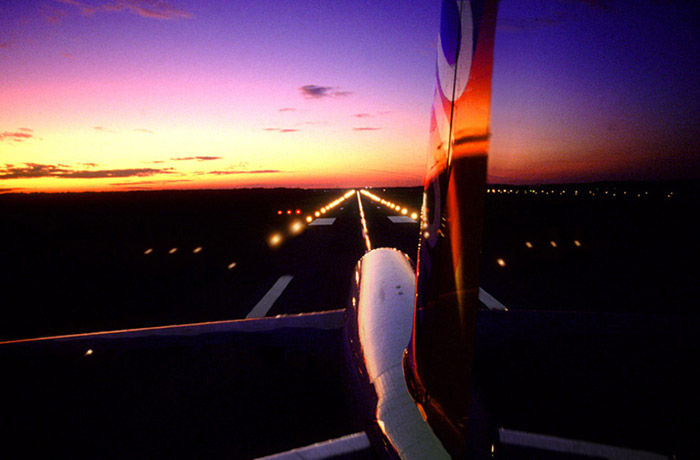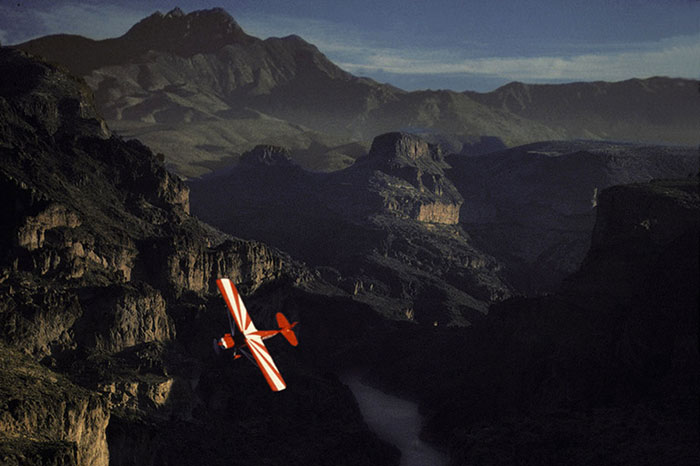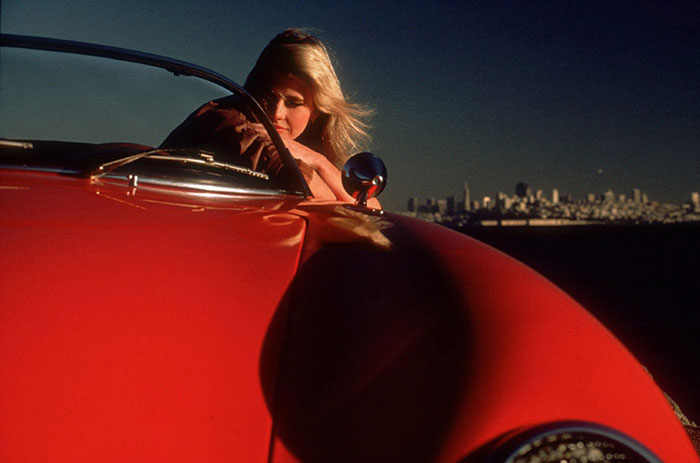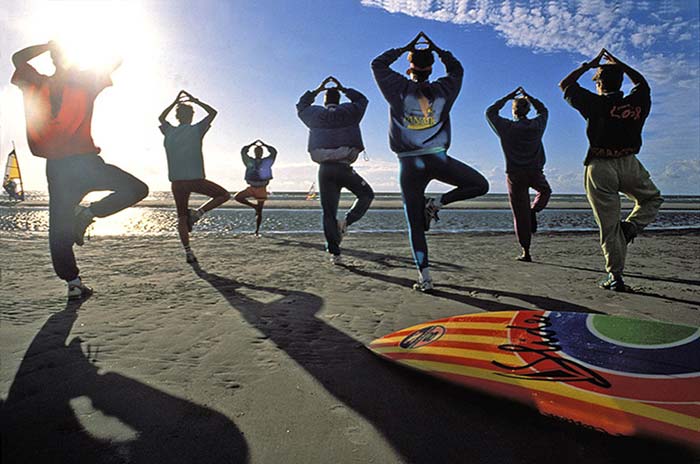
There is some form of light all around us every day. If talking about photography however, the word “light” in general would be too vague, because it is specifically the quality of light that is important.
The key to capturing a good photo is knowledge of the effect light can have on your subject. There are numerous ways to change a bland scene into an appetizing one, just by controlling the light. But how can someone control daylight, since it is the sun that determines the intensity and direction of that light? Very simple: either by waiting until the sun has moved to a preferred angle, by moving the camera to a more viable position, or, for smaller scenes, by channeling the sunlight via reflectors. Any of these methods can change the impact of a picture dramatically.
I remember a morning in the mountainous Sonora desert, Arizona, on an assignment for a commercial showing a small airplane in the midst of a breathtaking canyon scenario. The plans and preparations were set in place before the actual shooting. We had an hour’s flight with two planes to the chosen location. One plane was my camera standpoint and it would circle around the other plane. The left door was unhooked to allow me the widest shooting angle, and my legs were strapped to the floor so I could lean far out looking into the grand abyss of a canyon 3,000 feet deep.
At one point, the shooting situation seemed ideal with the small plane at the right spot and my camera at the proper angle. However, I did not bother to even look through the viewfinder. Instead, I signaled the pilots to change course and return to the airport. They had difficulties understanding this drastic change of plans, because their photographic experience was not the equal of their flying skills.
What had actually happened? The light was wrong! With the sun right behind us, the contours of the scene in front of us looked flat and boring. We needed to return again later, with the sun shining from an angle that would ensure more dramatic contrast and breathtaking depth.

It took days of observation at a remote bay on the southern Portuguese coast before the ideal combination of components came together for this commercial shot–low tide, no wind, a beautiful sky, and the perfect angle of sunlight. A photographer’s patience and determination is just as important as perfect light.

No doubt you have heard this phrase before–the early bird catches the best light. For a photography session in the sand dunes of the Mojave Desert in California, we had to leave for the remote location well before sunrise to be able to catch the ideal light conditions. With the morning sun barely above the horizon, I had a maximum of 40 minutes for the beautifully molded curves of light and shade. Shortly afterwards, the more elevated sun completely eliminated these stunning contrasts.

Early in the morning, ambience tends to be of a cool tenderness, which is repeated towards evening, but in a much warmer variation. The girl in the red roadster was photographed in the warm sunlight of a late afternoon. With the low position of the sun shining from the side, distinct shadows on hood and face create additional tension.

Daylight does not necessarily mean sunlight. The effect of full sunshine is obvious: colors shine brightly, contrasts create striking shadows. But one should not underestimate the subtle charm of light at dawn, at dusk, or on overcast or even foggy days. An overcast sky, even on a rainy day, can conjure a magical spell turning colors into sophisticated pastels.


Many of your best images can be created towards evening. A smooth sky, cloudy or clear, lends glossy surfaces a flattering tenderness that goes well with beautifully crafted technique.

Some decades ago, earlier in the development of photography and movies, light was primarily used for pure illumination without much consideration of effect. The preferred position of the sun was behind the camera, resulting in pictures with little contour, especially in landscapes. It was only much later that the sun was used in opposition, leading to more dramatic illumination.
As so often in life, added excitement implies higher risk. This goes for photography, too, so be daring and try a variety of lighting techniques.
Light in front shining towards the camera is a perfect example, because it can create an exciting atmosphere. It does not have to be a brutal sunbeam shining right into the lens. Just the sun being higher up but in front of the photographer causes a shadow pointing towards the camera from everything in the frame. Depending on the light angle, contours will be accentuated by highlights. This beautiful effect can be increased via simple underexposure.

Be aware when photographing with light in front: there are some traps that can spoil the fun, such as reflections on the lens, a grayish haze covering the whole picture, or shadows in critical areas that are too dark. A sunshade goes a long way to eliminating reflections and haze. Reduction of shadows can be achieved by picking an average exposure, taking into account both bright and dark areas. However, this is a compromise that sacrifices both contrast and vigor. For scenes up to around 10 yards from the camera, using a reflector or a light flash may well be worth the additional effort. Otherwise, this situation could result in family disputes, because Aunt Mary right in front of the camera is upset over her dark underexposed face, while Uncle Bill is delighted because his new convertible behind her in the bright sun is correctly exposed.
Don’t be afraid of shadows, since they often contribute drama to a picture. One can even deliberately keep them dark by setting the exposure for illuminated areas.

A method called the “mirror technique” is probably the most radical means of light manipulation. However, handled sensitively it can create plenty of dramatic atmosphere. The example of gymnastics on the beach demonstrates the effect of mirrors illuminating parts of the shaded areas. The trick here is to only lighten some areas while leaving others in the shade, contrary to an overall illumination that would cause a more bland effect.

Nature has its very own creativity and the changing weather delivers an unlimited variety of light and mood. It is up to the photographer to catch these moments and preserve them. All he needs is a watchful eye, plenty of patience – and some luck. The camera, I venture to suggest, is only of secondary importance.

by Gert Wagner
All Text & Images: © 2010 Gert Wagner. All Rights Reserved.

Danke Gert,
das Du mich an “unser” Airbus Photo erinnert hast!
(y)
Arno A. Evers